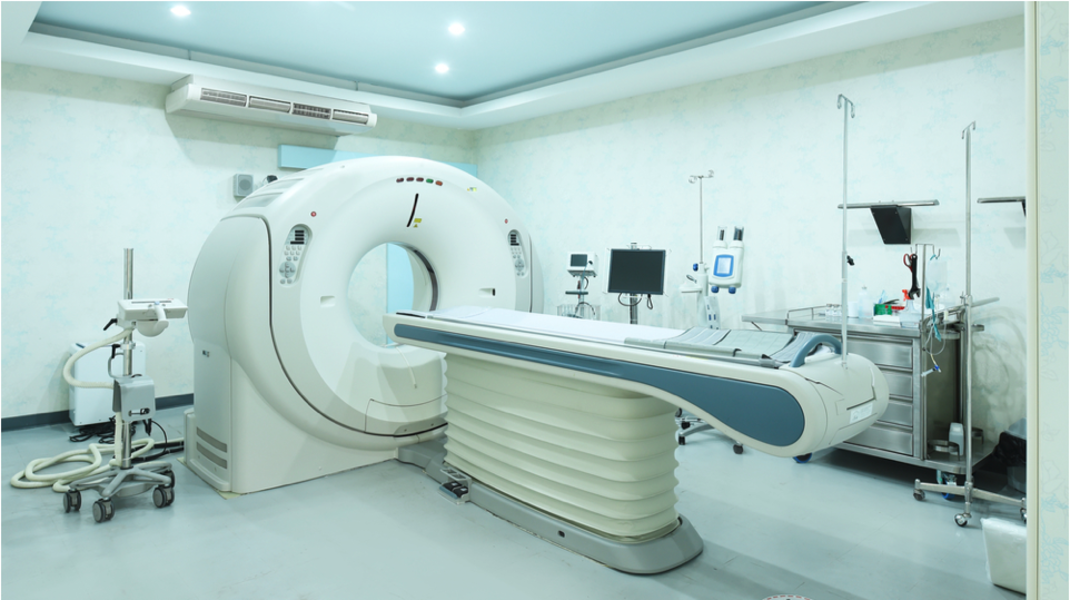While volume of use has fluctuated over the years, CT scans have remained an essential part of a physician’s arsenal.
This is especially true in the Emergency Department and in cancer diagnosis and care. The disparity in how ED doctors and oncologists typically use CT imaging—for immediate decisioning vs. long term monitoring—mirror the spectrum of complexity involved in scanning a single patient.
Hospital systems thus find it very difficult to create schedules and workflows to accomodate all types of CT patients. This leads to long waits for some patients and frustration for medical staff. Here we’ll explore achieving the line balance required to maximize efficiency, regardless of the complexity of the process.
The inherent imbalance in a CT department
Considering CT scanning from an operations perspective, the time required for the scans themselves has steadily decreased over the years. But long patient waits and staff overtime remain problems.
The actual scan only represents a small fraction of the patient’s total time in the imaging department. There is also the time to set up the machine and for patients to prepare and be properly positioned.
Creating a process that is in control demands that one create a balanced “line,” despite the litany of variables above. How is this possible?
Balancing a line with many variables
Creating a balanced line first requires determining a logical approach to segmenting patient volume, then mapping the process required for each segment. This can be simple. Pen and graph paper sketches are sufficient.
- Determine how to segment volume. In the case of a CT department, a logical segmentation is “drinkers” and “non-drinkers.” Drinkers ingest a contrast agent, which needs time to reach the desired body part; this is typically one hour from first sip to scan.
- For each segment, determine the required process steps. Map the journey for an individual patient, from the point that they walk into the department until the point that they walk out. Estimate the average time each step takes.
- Look at each segment’s process, and identify:
a. Opportunities to reduce the number of steps.
b. Opportunities to reduce the length of specific steps.
c. Opportunities to conduct steps in parallel rather than serially.
d. Places in the process where work-in-process (WIP), or any patients waiting for their next step, builds up.
Why -- and how -- to balance the system
In an unbalanced system, an exhausting and a never-ending cycle that happens every single day. Staff members may reroute resources to bolster capacity where needed, but in doing so deprive other areas of resources and create longer waiting times there. It’s often believed these issues aren’t solvable without additional staff or machines. In fact, they’re simply the outcomes of a process that is not balanced.
Balancing involves creating a predictable, controlled process that is easy to monitor and measure and is better for both patients and staff.
In the CT example above, the segmentation of drinkers and non-drinkers is only necessary for the initial stage of the process. Since every segmentation reduces the overall efficiency of the end-to-end process, it’s always good to look for opportunities to re-merge the segments if there’s a logical place to do so.
Next, we see that the total time required for the pre-work steps is roughly equivalent to the time for the actual imaging step. If pre-work steps are combined into a single step, the “line” will be balanced and result in a smooth, controlled process easily understood by patients and monitored by staff.
This balancing also reduces the number of hand-offs and “starts and stops” that a patient (or patient chart) must endure. In the unbalanced process, a CT scan patient or chart might be “touched” by five to nine people, handed off four to five times, and endure at least three “starts and stops.” In the balanced system, meanwhile, the patient or chart will be touched by three people at the most. There may be as few as zero hand-offs and as few as zero “starts and stops.”
The occasionally counterintuitive nature of line-balancing
Because the steps in a service operation are not fixed length processes, some steps may be faster or slower than average for a specific patient. While some individual patients may wait within one of the steps, the overall productivity within the department will still be vastly improved, as will the patient’s end-to-end time.
Another seemingly counterintuitive outcome is how some patients may actually begin the process later, but they will finish much earlier. In the pre-balanced environment, a patient with a 2:00pm appointment may be interviewed at 2:02pm. Due to the imbalance-caused build up of patients between steps, the patient may not begin the next step in their process until much later. But in the new balanced process, a patient who is interviewed at 2:10pm would be finished and out of the department by 2:40pm.
Results
Rethinking processes with an eye towards balance in the system can yield dramatic results. At one hospital system, the average patient time in the department was decreased by 42%, and the standard deviation around the average appointment length was reduced by 45%. Not only did the patient experience a shorter wait time, but their total time in the CT department was much more predictable, supporting much better coordination of care. Staff satisfaction was greatly improved, patients were not frustrated at long waits, and departments were able to close at their scheduled time.
Over the last decade or so, more and more hospitals have become aware it takes sophisticated analytics to improve operational efficiencies of their core processes. Creating balanced processes is the next horizon, resulting in happier staff and patients, and more efficient use of expensive assets like CT scanners. This simple technique can achieve an impact that is so positively felt by all stakeholders in the process.


